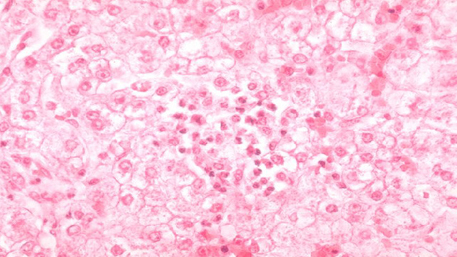Search Results
10 results for cancer
Progress in Public Health Genomics Depends on Measuring Population Level Outcomes

Public health genomics is a relatively young field concerned with the effective and responsible translation of genomic science into population health benefits. In the past few years, the field has witnessed the emergence of several state public health genomics programs beyond the traditional domain of newborn screening. The field has focused on preventing disease and
Posted on byTrends in CDC Publications in Public Health Genomics, 2012-2016

Public health genomics advances the translation of genome-based discoveries into disease prevention and population health. Scientists at the Centers for Disease Control and Prevention (CDC) are using information about human, vector, and pathogen genomes to tackle diverse public health problems, from newborn metabolic disorders to infectious disease outbreaks. For an overview of CDC publications in
Posted on byHappy Holidays! Celebrating the Arrival of 2018 and 20 Years of Public Health Genomics!

This December, we are especially excited as we anticipate the dawning of a bright new year. The ebbing of 2017 marks the end of, not just another year, but two decades of public health genomics. Recently we were provided two valuable opportunities to place a capstone on this important milestone. Last month, at the American
Posted on byIf You Build It Will They Come? The Urgent Need for Implementation Science in Genomic Medicine

As the evidence base for genomic medicine grows, evaluating and implementing genomics to improve health care and population health remains an ongoing challenge. There is no guarantee that “if we build it they will come,” paraphrasing the well-known expression from the movie, Field of Dreams. To improve adoption, uptake and sustainability of genomic medicine applications,
Posted on byPublic health genomics information is now easily accessible online

The amount of emerging genomic information related to healthcare and public health is staggering. PHGKB is a one-stop shop for information relevant to genomics translation and population health impact for almost all diseases across the life span. MyPHGKB allows end users to customize their own PHGKB databases and type of information. The Public Health Genomics
Posted on byHappy Thanksgiving 2017: Take time to collect, share, and act on your family health history, it may save your life!

Regular readers of this blog may have noticed that we have an almost identical message around each Thanksgiving Day. Collect, share, and act on your family health history! It seems every year we emphasize a slightly different version of this message. In 2016, we highlighted the emergence of new tools that can help consumers and
Posted on byGenomics and Precision Medicine: How Can Emerging Technologies Address Population Health Disparities? Join the Conversation.

Advances in genome sequencing, other “omic” technologies, and big data promise a new era of personalized medicine. However, there is an ongoing discussion how these new technologies can be used to understand and address existing population health disparities. On October 11, 2017, the Precision Medicine and Population Health Interest Group in the Division of Cancer
Posted on by 1 CommentIntegrating Pharmacogenomics in Practice: One GIFT at a Time or a Package Deal?

Testing for genetic variants related to warfarin metabolism has been the poster child for pharmacogenomics in clinical practice for over a decade. A recent publication of the Genetic Informatics Trial (GIFT) provides additional evidence for the clinical benefits of incorporating pharmacogenomics testing into the management of warfarin initiation. In this multicenter study of older individuals
Posted on byTrends and Factors Affecting Utilization of BRCA Testing in the United States: The Need for Improved Surveillance

This blog post is a summary of two recent CDC papers on the trends in utilization of BRCA testing in the United States, and metropolitan-nonmetropolitan areas differences in testing. Women with pathogenic BRCA mutations have an estimated 45–65% risk of breast cancer and a 17–39% risk of ovarian cancer by age 70, as compared with
Posted on byA New Public Health Assessment of the Disease Burden of Hereditary Hemochromatosis: How Clinically Actionable is C282Y Homozygosity?

This blog post is based on a recent paper by Grosse, Gurrin, Bertalli, and Allen in Genetics in Medicine. Hereditary hemochromatosis (HH) attributable to mutations in the HFE gene is the most common autosomal recessive disorder among adults of northern European origin. It occurs in 1 in 300 non-Hispanic whites in the United States. Approximately
Posted on by